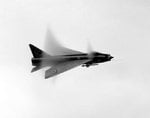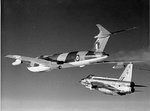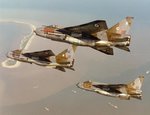- Thread starter
- #261
102first_hussars
Tech Sergeant
Thanky You!!!!!Well lets see, a friend of mine who is now a Blackhawk Crewchief in my unit, was a Tomcat mechanic in the Navy and he said that when an alert happened it took them 2 minutes to get the first 2 Tomcats in the air, thats 2 minutes my friend. Not a bad time to get into the air. He said the next 2 would take about 3 to 4 minutes to get into the air. Okay 5 to 6 minutes for 4. So in 4 minutes you can have 30 to 35 Pheonix missles on Tomcats climbing to alltitude. Once the Tomcats are to Alltitude the Tomcat can fire those 30 to 35 missles at targets at ranges that the Lightning has to fly to.
I will say this again. The Tomcat is more overall capable than the Lightning, The Tomcat can carry a better overall weapons package than the Lightning, the Tomcat has a better overall avionix package than the Lightning, The Tomcat is the premier Cold War interceptor. The Tomcat is a better ovarall aircraft than the Lightning. Period!!!!
I was kinda outnumbered there for a second...





